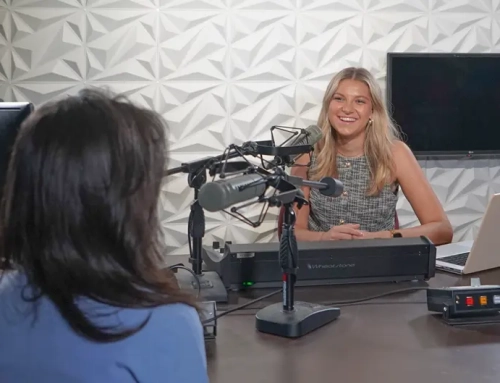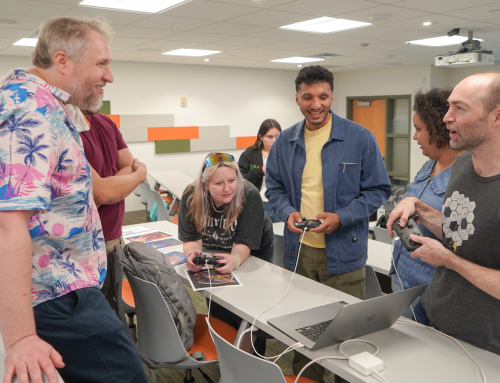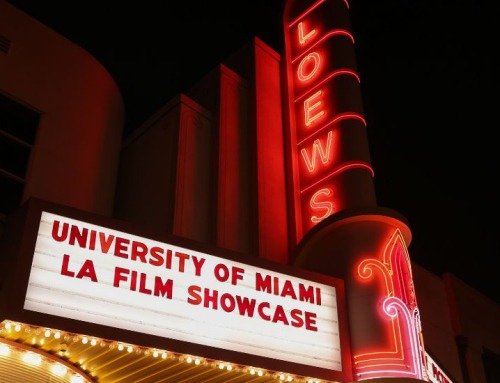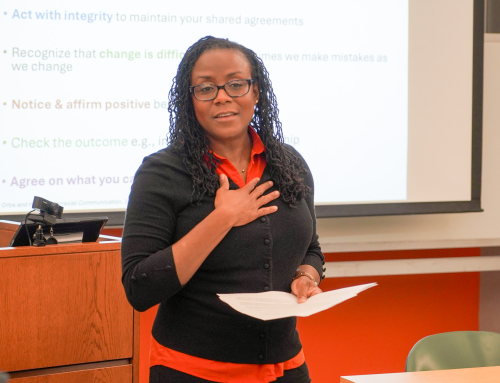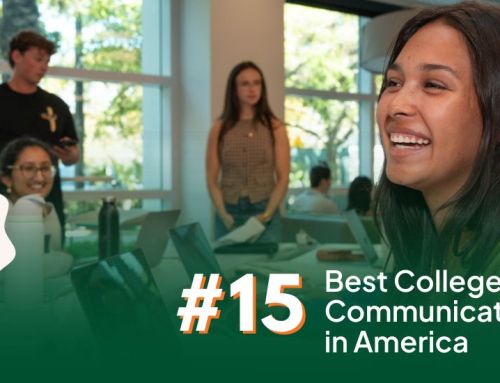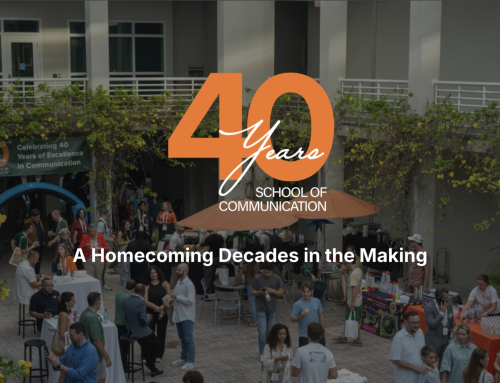Sharing insights about the future of XR
The University’s first Miami XR conference attracted industry leaders and educators from across the nation who discussed integrating extended reality in our lives.
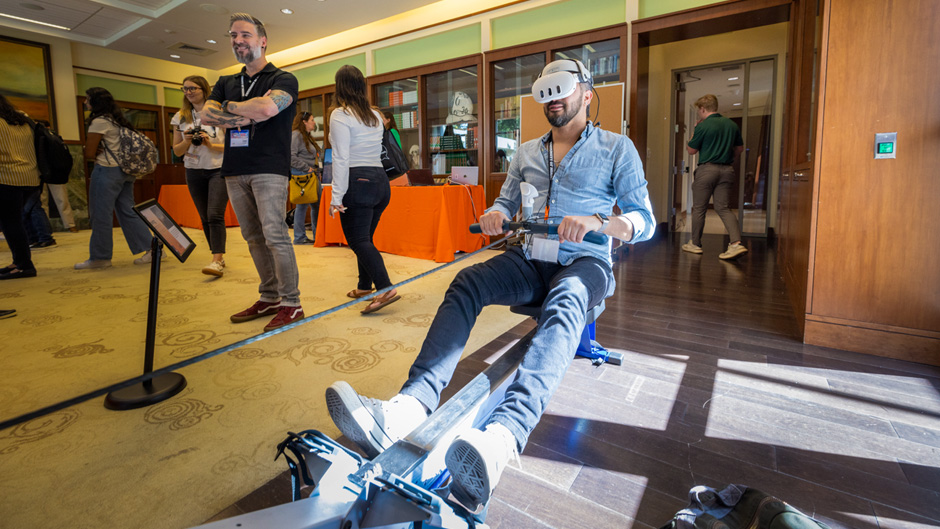
By Janette Neuwahl Tannen
2-11-2025
This story originally appeared at News@TheU.
With the use of a virtual reality headset, participants could learn to give medication to a dog or cat, engage in a community gardening experience, go rowing in a unique location, or use a robotic arm like those seen in car factories.
These applications, along with many others, were on display at the University of Miami’s first conference focused on extended reality. Miami XR 2025 was organized by the UMVerse, an initiative based out of the University’s Office of the Provost to encourage the use of virtual, augmented, and mixed reality on campus, with support from the Frost Institute for Data Science and Computing.
“Miami XR was meant to expose our students and faculty to the incredible potential of this technology and the excellent work people are doing in industry and academia,” said Kim Grinfeder, director of the UMverse, and chair of the Department of Interactive Media at the School of Communication. “I think attendees were stunned by how far we’ve come as a University in this field, and it really put the University of Miami on the map.”
Since the initiative began seven years ago, the University has been able to create a host of student- and faculty-created VR and AR applications through its Virtual Experiences Simulation Lab. In addition, there are now more than 40 courses that have integrated a VR or AR experience at the University, reaching at least 1,000 students.
The acceleration and interest in the field led the UMverse to host its own conference last week, organized by Grinfeder and Thomas Merrick, senior project manager of XR initiatives and an adjunct lecturer of interactive media.
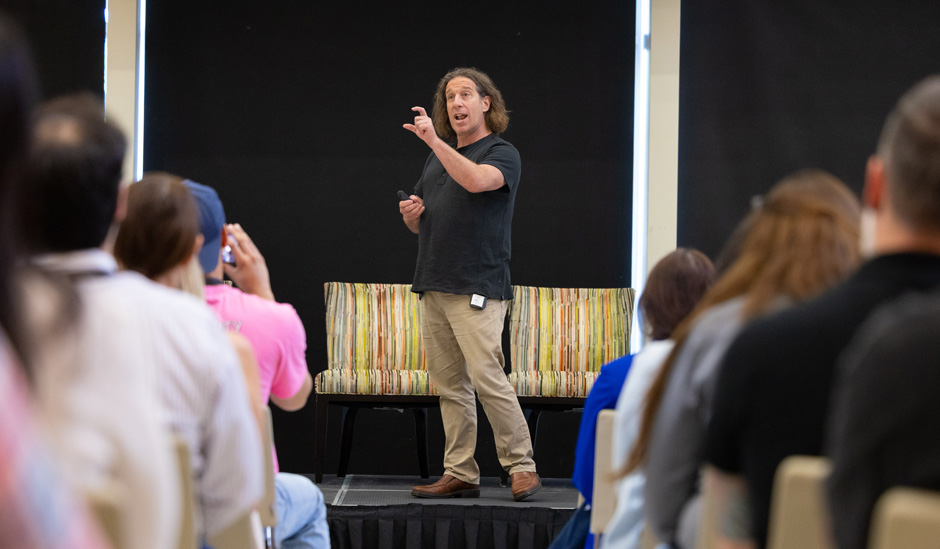
Keynote speaker Jeremy Bailenson from Stanford University is one of the first academics to do research about the impact of virtual and augmented reality on human psychology, behavior, and learning. He founded the Virtual Human Interaction Lab in 2003 to focus on virtual and augmented reality. With the availability of better headsets, recently his area of research has exploded, Bailenson said, adding that half of all the research on extended reality has been published since 2019.
Bailenson explained many of the prominent findings from his lab, including the fact that even though 30 million Americans have VR headsets, they use them only about once a week. Yet, the medium has a formidable impact on those who are exposed to VR experiences, he added. Many children who have done things in virtual reality believe they have experienced them in real life. Adults often cannot tell the difference either because graphics today are so realistic.
Although it is such a powerful, believable medium, Bailenson said, VR and AR should not permeate our experiences.
“I don’t think we should be putting on headsets for computing,” he said. “Everything I know about this medium is it’s not an everyday thing.”
Still, research shows it is a powerful tool for learning, Bailenson said, as long as creators save VR for things that are dangerous or impossible in real life, as well as those that are counterproductive or too costly to produce in reality. That led him to work with his former graduate students to form two startups—Strivr, which started by helping athletes hone their skills using VR but now trains employees at major corporate retail stores on things like active shooter training; and Inspirit VR, which trains K-12 school teachers across the country about how to integrate the technology into their classes.
“I believe when VR can be used in the classrooms, it should be used rarely, but it can be transformative,” Bailenson said.
One of Bailenson’s former students, Anna Queiroz, now an associate professor of interactive media at the University agreed. She created a VR ocean experience for 33,000 students in Brazil to learn about coral reefs and was also able to publish research on it.
“I’ve found students get more confident when they learn in VR,” she said. “My students were learning about the ocean, and the more they explored that environment, the more they felt self-confident in their knowledge about it.”
Another keynote speaker was Carolina Cruz-Neira, Agere Chair Professor of computer science from the University of Central Florida. Cruz-Neira started using digital projectors to create an immersive digital experience in the early 1990s. Today, her updated CAVE technology is used at Disney World, as well as in many other interactive museum experiences. However, Cruz-Neira said her work has also focused on creating digital twins of products and even cities to test out innovations and get them to market faster.
“Digital twins give us centralizing information, allowing speed and agility,” said Cruz-Neira. “These can speed up product development for things from nine years to two years.”
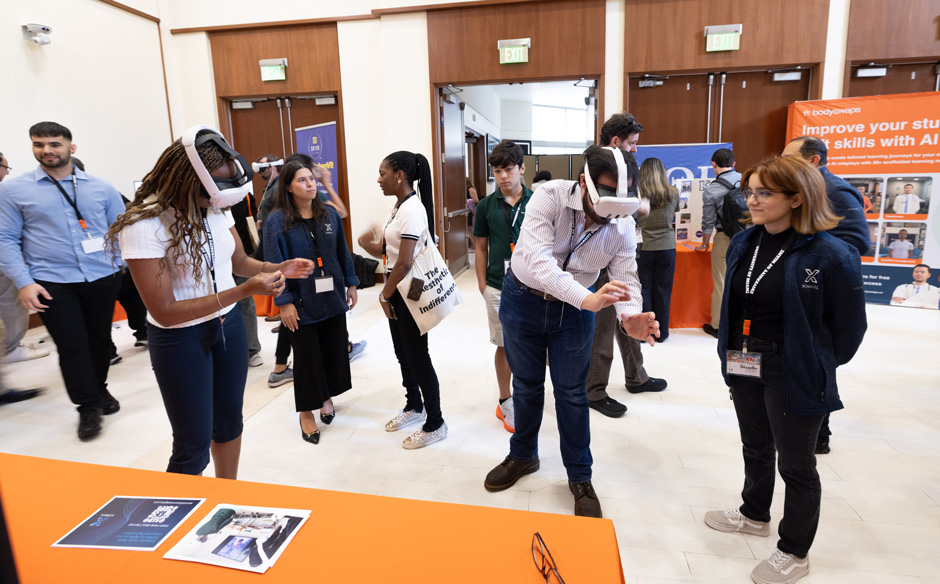
The conference attracted hundreds of industry and academic leaders from the XR field, as well as students interested in developing virtual reality applications. Leaders from companies like HTC Vive, which makes innovative headsets for virtual reality; Engage, a VR platform used for virtual classes at the University; Curio, a free virtual reality application for learning; Microsoft and Meta, which create VR headsets; Xennial Digital, which creates VR experiences for colleges and other companies; SafeKitchen VR, which creates apps to train culinary employees; and BodySwaps, a company that helps people prepare for challenging workplace conversations—spoke during 5-minute lightning talks.
Juniors Raquel Henao and Mia Uy, who are both studying interactive media at the University, said they were inspired by Bailenson’s keynote. The two young women collaborated to create an interactive community garden experience for a class assignment and were demonstrating the app at the conference.
“Hearing how VR can build empathy was very cool because that’s where I would like to go with this field in the future—to create social impact experiences,” Henao said.
Faculty and staff members using XR on campuses across the country also shared insights during a separate lightning talk session.
Colleen Cleveland, an instructional designer from New Mexico State University, explained how her team is successfully encouraging faculty and students to check out the institution’s growing collection of headsets. And Russell Betts, an administrator from Broward College, explained how he used virtual reality in his organic chemistry classes to build molecules and compounds in VR with his students.
Cruz-Neira said now is the time for fresh ideas in the field.
“For the younger students in audience, please be creative. Open your mind and think big. Be disruptive,” she said. “Since the Oculus (headset) came out, we have been doing more of the same. We have been improving, but we have not been disruptive. We need to move forward.”

